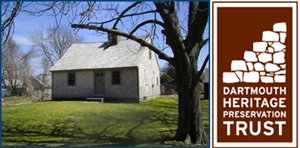
 Students set up their archaeological equipment for the first time on Tuesday (photo © Diane Gilbert 2007). We have begun our excavations with five 1 x 1 m square "units" (a.k.a. "holes") in the front and side yards of the Akin property. Each unit has a unique designation: AH1, AH2, AH3, AH4, and AH5.
Students set up their archaeological equipment for the first time on Tuesday (photo © Diane Gilbert 2007). We have begun our excavations with five 1 x 1 m square "units" (a.k.a. "holes") in the front and side yards of the Akin property. Each unit has a unique designation: AH1, AH2, AH3, AH4, and AH5.AH1: front yard
Justin and Scott have, so far, excavated deeper than any other team (about 20 cm). Justin writes: "we have found several artifacts, including a square iron nail, red earthenware fragments, and pearlware pieces... Learning how to dig carefully and what to look for while I dig is really interesting. I feel very excited to be a part of my local history." "Pearlware" is a type of earthenware that was introduced as a cheaper alternative to porcelain. It was made in England between about 1785 and 1840.
AH2: front yard, edge of the berm
AH2 is located 8 m east of AH1, where the flat front yard transitions to a sloping bank of dirt, or "berm," piled around the house foundation. Bettie-Anne and Chelsea are removing topsoil levels in this unit. They haven't found many artifacts yet, but there are plenty of old chestnuts from a tree nearby. Bettie-Anne describes why this tree is special: "These are American chestnuts (edible, and prized by early settlers as well as later residents for more than two hundred years)... These trees were killed by a blight and died out in the early part of the 1900’s." The Akin chestnut tree may be the only survivor of the 1907 blight that killed other trees in town.
AH3: front yard, on the berm & by the front door
Lisa and Shane are excavating next to the front door of the Akin House, 3 m east of AH2 and on top of the berm. As expected, they are finding many artifacts associated with the house itself. The dozens of iron nails they found were probably made in the 18th century, when the Akin house was built. The nails made their way into the ground only recently, as original shingles were repaired and replaced. Lisa is excited to "glimpse into the lives of the various people that had lived in the house over the years and how they chose to modify the home to make it their own... We have uncovered many house related items, since the unit is right next to the steps leading to the front door. These items include paint chips, lots of nails, electrical components, a shutter latch, pieces of glass, pottery, pieces from plastic plants, shell fragments, and a small plastic nose from a child’s toy. I am extremely interested to see what we will uncover as we dig deeper." Shane appreciated the tour of the Akin house provided by the project's architectural historian, who described features of construction and the repairs that had been made. He noted that objects found in AH3 relate to the house construction and repair, including an old door latch and the many nails.
AH4: side yard
Our fourth excavation unit is located in the side yard. We hope it will reveal any different histories of land use in the front and side yards. Geophysical prospection found a circular trench feature in this portion of the yard, and we hope AH4 will give us a better idea of that feature's use. In the meanwhile, Erica reports that she and Gabe have "found small rocks, roots, root decay, paper substance, wrapper substance and material waste called slag once used for cooking. Also found were two small pieces of a porcelain decorative object with green and brown designs [painted] on them. We assume at this point that the two pieces belonged to the same vessel and hope to find more pieces of this object so we may identify it accurately."
AH5: side yard, far corner
Pat and Cassie are working in the far corner of the side yard, 25 m north of most of their classmates. According to Pat, their "finds thus far are a lot of slag... a lot of rock (small), a wound ball which we watched unravel [the core of a golf ball], some shell pieces... and a partially crushed golf ball. Each find makes you want to continue excavating, to see what your next treasure will be." Slag is a byproduct from smelting or working metal. There is more slag in AH5 than expected, or in any other unit. Future chemical analysis may tell us what sort of metalwork Akin House residents were doing in the recent past. Geophysical prospection found four probable post holes and foundation trenches in this area of the side yard, but they are not from any known outbuilding. As students excavate further in AH5, they should hit one of these postholes, informing us about the age of the former structure and its use.



